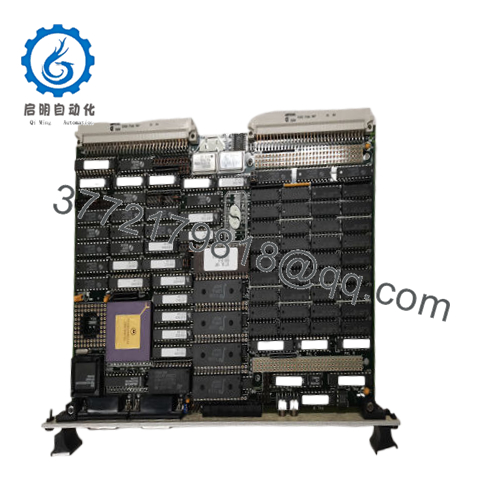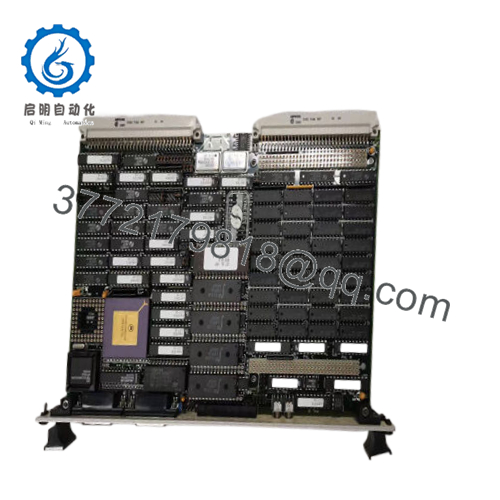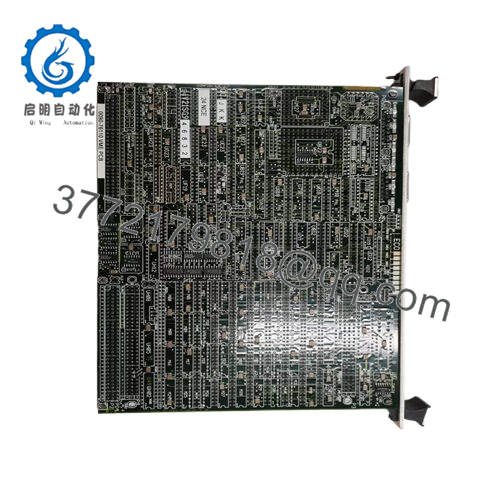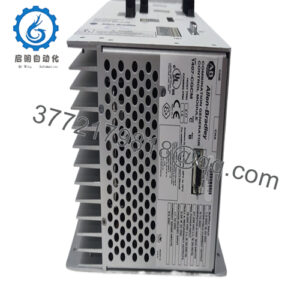Description
Product Model: 0090-76110
Product Brand: AMAT (Applied Materials)
Product Series / Role: Synergy VME CPU / Synergy Up CPU Board
Product Features:
- VME CPU module (Synergy / Synergy Up) — core processor/board for AMAT tool control
- Version V21 (firmware / architecture) as seen in listings
- Industrial grade board, fits VME (6U) rack systems
- Repairable / refurbishable, commonly traded as spare board
- 0090-76110 VME PCB
Applications & Industry Context
In semiconductor fabrication environments, control electronics must be robust, modular, and serviceable. The AMAT 0090-76110 board is a VME CPU / controller board used in AMAT Synergy systems (often labeled Synergy Up or Synergy V21). It plays a central role in driving process tools, interfacing sensors, executing logic, and coordinating subsystems.
You’ll find this board inside AMAT tool control cabinets (etch, deposition, cleaning, CMP, etc.). It’s part of the “heart” of the control electronics. In operations where uptime is critical, having a working spare 0090-76110 is key — many aftermarket suppliers list it as a commonly replaced component.
Given that process tools often run for years, engineering teams adopt preventive replacement policies. When a board degrades (due to heat, connector stress, firmware errors), swapping in a fresh 0090-76110 can restore tool function quickly. Because it’s a standard VME CPU board in Synergy systems, it’s well understood in the service aftermarket.
Product Role & System Fit
The 0090-76110 is a VME CPU module within AMAT’s Synergy electronics architecture. It typically lives in a VME backplane / chassis (6U format) and interfaces to peripheral modules (I/O, communications, sensors) via the VME bus. Its firmware (often “V21” or Synergy version) drives control sequences, handles data processing, and supports diagnostics.
Because it’s the primary CPU, failure of the 0090-76110 often renders the tool control offline. Hence it’s a critical spare. In modern AMAT tool designs, the synergy CPU board is often paired with memory, watchdog, and backup modules, and may support redundancy in some tool configurations.
When integrating or upgrading tool electronics, you may need to ensure compatibility of firmware revision, VME address mapping, and connector pinouts. Boards of different revisions (e.g. V21 vs older) may have subtle differences in I/O mapping or debugging interfaces.
Because it’s a VME module, it fits standard VME architecture standards and can connect to other VME modules (standard I/O, bus extenders). Many control engineers treat the 0090-76110 as “plug-and-play” within Synergy system frameworks, assuming firmware and configuration alignment.
Technical Features & Benefits
Here’s what we can infer (and what is confirmed from listings) about this board’s features:
- VME CPU Board / Processing Core
Listings repeatedly identify 0090-76110 as “Synergy SCB CPU” or “Synergy VME CPU” board. - Firmware Version V21
Many listing titles include “V21” which likely refers to the firmware or board version. - VME 6U Form Factor / Backplane Integration
It’s sold as a VME CPU board. Versatek lists it as “VME CPU Synergy 0090-76110.” - PCB / Board Construction
Some resellers list weight (~0.55 kg) and that the board is “PCB V21 VME CPU Synergy Micro Systems 0090-76110.” - Commonly Refurbished / Traded
The board appears in multiple surplus / refurbishment listings (Semiconstore, J316Gallery) as a spare part.
From a benefits standpoint:
- Because it’s a modular, standard VME board, replacement is faster than redesigning control electronics.
- Firmware / version identification (V21) aids in compatibility and avoids mismatches.
- Its modular nature allows engineers to isolate problems to board-level rather than entire control systems.
- High demand in aftermarket market improves availability of spares.
Installation & Maintenance Insights
Working with the AMAT 0090-76110 requires care in handling, alignment, and system integration. Here are field best practices:
- Board Seating and Backplane Contact
Ensure the board is fully seated into VME connectors, with no bent pins. Backplane connection is critical — partial seating can cause intermittent faults or bus errors. - Power Off During Insertion/Removal
Always disable VME backplane power before inserting or removing the 0090-76110. Hot-swap is risky unless properly supported. - Firmware / Configuration
Confirm that the firmware version (e.g. V21) matches or is accepted by the tool’s system control. Load or verify configuration before or immediately after board swap. - Signal Checks & Diagnostics
Once installed, ensure the module communicates on the VME bus. Run health diagnostics and verify the board’s address space, interrupts, and I/O modules respond. - Cooling & Environment
VME CPU boards generate heat; ensure adequate airflow and maintain ambient temperature ratings inside the cabinet. - Periodic Inspection
During scheduled outages, inspect board connectors, cooling blowers, dust accumulation, and test for marginal solder joints or cracked traces. - Spare Board Strategy & Burn-In
Keep a pretested spare 0090-76110. Before deploying in a live tool, execute a burn-in period under stress (load, temperature) to uncover latent defects. - Backup of Calibration / Parameters
If the board stores configuration, mapping, or calibration data, maintain backups so replacements can be matched quickly.
In my experience with semiconductor tool electronics, having a functional spare CPU board like this often allows full restoration of system control in less than an hour, whereas trying to repair a degraded board in situ is time-consuming.
Technical Specifications Table
Below is a speculative / aggregated spec table based on public listings. Treat these values as approximate; verify with original drawings.
| Parameter | Value / Description | Notes / Source |
|---|---|---|
| Module Type | VME CPU Board (Synergy / Synergy Up) | From listings “VME CPU Synergy” |
| Firmware / Version | V21 | Many listings include “V21” in title |
| Board Weight | ~0.55 kg | J316Gallery listing cites this weight |
| Condition Offer | Refurbished / used / “untested” | Multiple listings show it as used/refurbished |
| Form Factor | Likely 6U VME board | VME CPU listing implies standard size |
| Role | Main CPU / controller module | All listings reference “CPU Synergy” or “VME CPU” |
| Backplane Interface | VME (IEEE standard) | Implied by “VME CPU” title |
| Common Usage | Synergy / Synergy Up tool electronics | Versatek lists as VME CPU Synergy board |
| Availability | Surplus / refurb market | Many reseller listings |
These data help give structure to catalog, spec sheet, or procurement documentation.
Related Models & Alternatives
Here are boards and modules often associated with or alternative to 0090-76110:
- Other AMAT Synergy CPU Modules — possible earlier or later firmware revisions
- Peripheral VME boards in Synergy system — I/O boards, memory boards, bus extenders
- Other Synergy Up CPU modules — in the same family
- Alternate Control Boards — in tool retrofits, some users migrate from Synergy to other CPU architectures (though often more complex)
When designing spares or system upgrades, ensure firmware compatibility, connector pinouts, and bus mapping match the existing board.




 WhatsApp: +86 16626708626
WhatsApp: +86 16626708626 Email:
Email:  Phone: +86 16626708626
Phone: +86 16626708626


